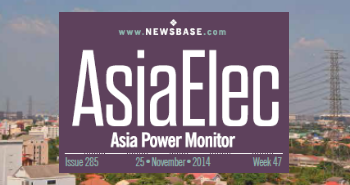REM: Siemens Gamesa see its value drop nearly 50% in 12 months, CEO out

Original equipment manufacturers (OEMs) in the wind industry are facing a rocky road because of cost pressures and the pandemic. This means a slashing in their value and, in the case of Siemens Gamesa Renewable Energy (SGRE), a toppling of their chief executive officer. The top OEMs have – across the board – delayed products, raised prices and issues profit warnings.
SGRE’s market capitalisation has dropped from €22.9bn ($26.2bn) as little 12 months ago to some €12.58bn in the first week of February. Share prices had tumbled almost 53% in a year as of February 8.
In January, the company reported a sizeable loss of €309mn in the first quarter of its 2022 financial year, from the start of October 2021 to the end of December 2021.
SGRE, based in Spain, had cut its guidance. It said that its profit margin for its core business might slump to minus 4%, and would only be 1% most optimistically, whereas its previous guidance had been for 1% to 4% for the 2022 financial year.
"Our development timeline was maybe here and there a bit optimistic," lamented CEO Andreas Nauen at the time. "Logistics costs have also been kind of exploding in recent months."
The German-Spanish company’s booked orders were worth €33.6bn at the end of 2021 but as much as €2bn of that did not have a positive margin. The company is 67% owned by Siemens AG.
Soon after, in early February and after its third profit warnings, the board announced that Nauen would be out as of March 1, to be replaced by Jochen Eickholt, an executive board member. Nauen had been in charge only 18 months.
“Siemens Gamesa is experiencing significant challenges in its onshore business in a very difficult market and we have appointed an executive with a strong track record in managing complex operational situations and in successfully turning around underperforming businesses,” said Miguel Angel López, chairman of the board of directors of Siemens Gamesa.
The priority is to turn around the OEM’s onshore business, said López. It is the sector leader globally in offshore.
“With an order backlog of more than €33bn, leadership in the growing offshore market and a strong service business, the company is well positioned for future success,” continued López.
In early February, the company elaborated in its lowered guidance, and projected even lower revenues, citing supply chain issues, Covid and “ramp-up challenges of the Siemens Gamesa 5.X platform [that] affected production and the project execution schedule.” It also said that “supply chain disruptions … are expected to last longer than previously anticipated.” The company said its onshore business could return to profitability in FY 2024-5.
SGRE cited its guidance for FY22 and a revenue growth of between -9.0% and -2.0% year on year. This is in addition to the profitability cited in its earnings report in January. That was an earnings before interest and taxes (EBIT) margin – pre purchase price allocation (PPA) – before integration and restructuring (I&R) costs of between -4.0% and 1.0%.
Previously, revenue had been expected to decline by between -7% and -2%, and an EBIT margin pre PPA and I&R costs between +1% and +4%.
Despite the complex near-term environment, Siemens Gamesa said it maintains its long-term vision for the business, aiming for an EBIT margin pre PPA and I&R costs of +8% to +10%.
“This vision is expected to be achieved between fiscal year 2024 and fiscal year 2025, supported by the recovery in profitability in the onshore market and by sustained profitable growth in the offshore and service markets,” it continued.
“We remain immersed in a very complex market environment, with disruptions and low visibility in the supply chain” Nauen told reporters after the announcement on a conference call.
Two waves of supply chain issues have occurred: higher raw materials costs, such as steel and copper, and logistical issues, he said. Prices for those commodities will not ease by 2023, he predicted, and therefor pricing for the year after remains “impossible” to predict.
“Components are not delivered as we ordered, ships are not arriving, we do not get the electronic components and sometimes some of the mechanical components, and that interrupts our production,” he continued. “You are basically chasing your parts.” This mostly affected the manufacturing of nacelles, he said. SGRE is attempting to alleviate this by ordering parts in larger quantities to ease the shortages.
The outgoing CEO told the conference call: “The [wind turbine] sector is experiencing an extremely difficult earning cycle. It isn’t just Siemens Gamesa, and it isn’t just this quarter.
“We see OEMs remaining in a very difficult spot and struggling to be profitable. I believe that our value needs to extend beyond price: We bring a lot of benefits to society and the energy transition, including jobs creation in the countries that we work in.
“We need to be financially sustainable so we can continue to create value for all our stakeholders and create a better world.”




Follow us online